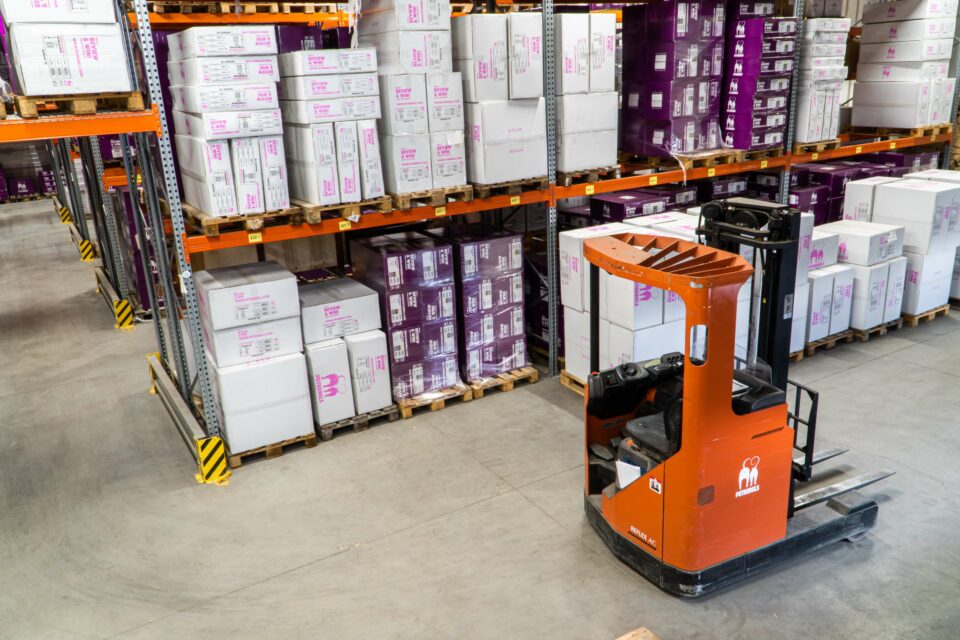
How Vendor Managed Inventory (VMI) Strengthens Supply Chain Resilience and Collaboration
To optimize inventory management, retailers and suppliers are increasingly turning to Vendor Managed Inventory (VMI) tools that transfer the responsibility…
Generix Ushers in a New Era of Intelligent Commerce for Retailers with AI-Driven Innovation Read the press release

Admittedly, stock management and supply management models with APM have demonstrated their worth in established markets, through conventional modeling (setting minimum and maximum stock thresholds, fixed triggering of replenishments), and weighting based on historical seasonality, which are applied year to year to incremental volumes resulting from the overall market evolution. However, this approach does not allow companies to outperform the competition or adapt quickly when faced with unexpected exogenous events.
After a succession of unpredictable global shockwaves stemming from events like the Covid-19 pandemic, the war in Ukraine, the soaring prices of raw materials, energy and transport, or climatic events; inventory surplus and shortages are a daily occurrence.
These geopolitical, climatic and economic fluctuations directly and massively affect the value and cost of inventories. Dual supply chains, with a long cycle for prices and a short cycle for availability adjustments, have been a somewhat effective response for over fifteen years. However, they do not optimize the entire chain, and remain expensive and moderately flexible.
The current, and significant, paradigm shift is to combine all these different pieces of information with direct and indirect forecasts, and to work with every player in the chain to optimize the availability of goods sold to customers. The quest for global value creation (to be shared, of course) takes precedence over segmental optimization. Digital Native Vertical Brands (DNVB) and the omnichannel trend are the most prominent examples of this shift.
This new approach requires state-of-the-art tools (analytic algorithms developed in-house or purchased from specialized providers), capable of predicting variations in customer purchasing behavior, thereby adapting inventory levels in the right location, in both a short (a few days) and a medium (three to six months) timeframe.
It also involves broadening the range of information used, drawing on and putting into perspective weak signals, sociological, cultural and geographical trends, fine correlations between weather or seasonal variations and consumer behavior, while focusing on market micro-segments (especially those that react strongly to influential posts).
The challenge lies in convincing all the players to adopt this approach. Measuring value creation and sharing it are the best ways to respond.
The champions of this new approach are those retail companies that have successfully carried out their omnichannel transformation, for example, aligning procurement with local consumption, and widening their offer by marketplace. E-commerce sites (DNVB) have also created new models by entering into agreements with manufacturers to manage their inventories, order preparation and deliveries. However, these businesses need to be guided by very short-term forecasts combined with 3 or 6-month trends.
The benefits, in terms of inventory, sales and customer satisfaction, are nothing short of spectacular!
At the same time, the optimization of goods will increasingly require real-time sharing of information between manufacturers (with factories and warehouses), logistics providers and distributors (with warehouses and stores). Product availability and sales will then greatly improve in step, since every stakeholder will be able to access the forecasts and the flow of customer orders!
Thanks to advanced algorithms and software, this optimization reduces losses, and improves inventory “freshness” as well as everyone’s cash flow, to the tune of millions of dollars! It would be highly unfortunate if businesses were to miss out on benefitting from this opportunity..
At Generix Group North America, we provide a series of solutions within our Supply Chain Hub product suite to create efficiencies across your entire supply chain. Our solutions are in use around the world and our experience is second-to-none.
We invite you to contact us to learn more. Download our Guide to the Warehouse of the Future

To optimize inventory management, retailers and suppliers are increasingly turning to Vendor Managed Inventory (VMI) tools that transfer the responsibility…

In an ever-evolving logistics environment, agile and precise warehouse resource management is essential to remain competitive. With increasing volumes driven…

France’s electronic invoicing reform relies on a Y-architecture, where Partner Dematerialization Providers (PDPs) play a central role in issuing and…

Work with our team to build your ideal supply chain software stack and tailor it to your unique business needs.